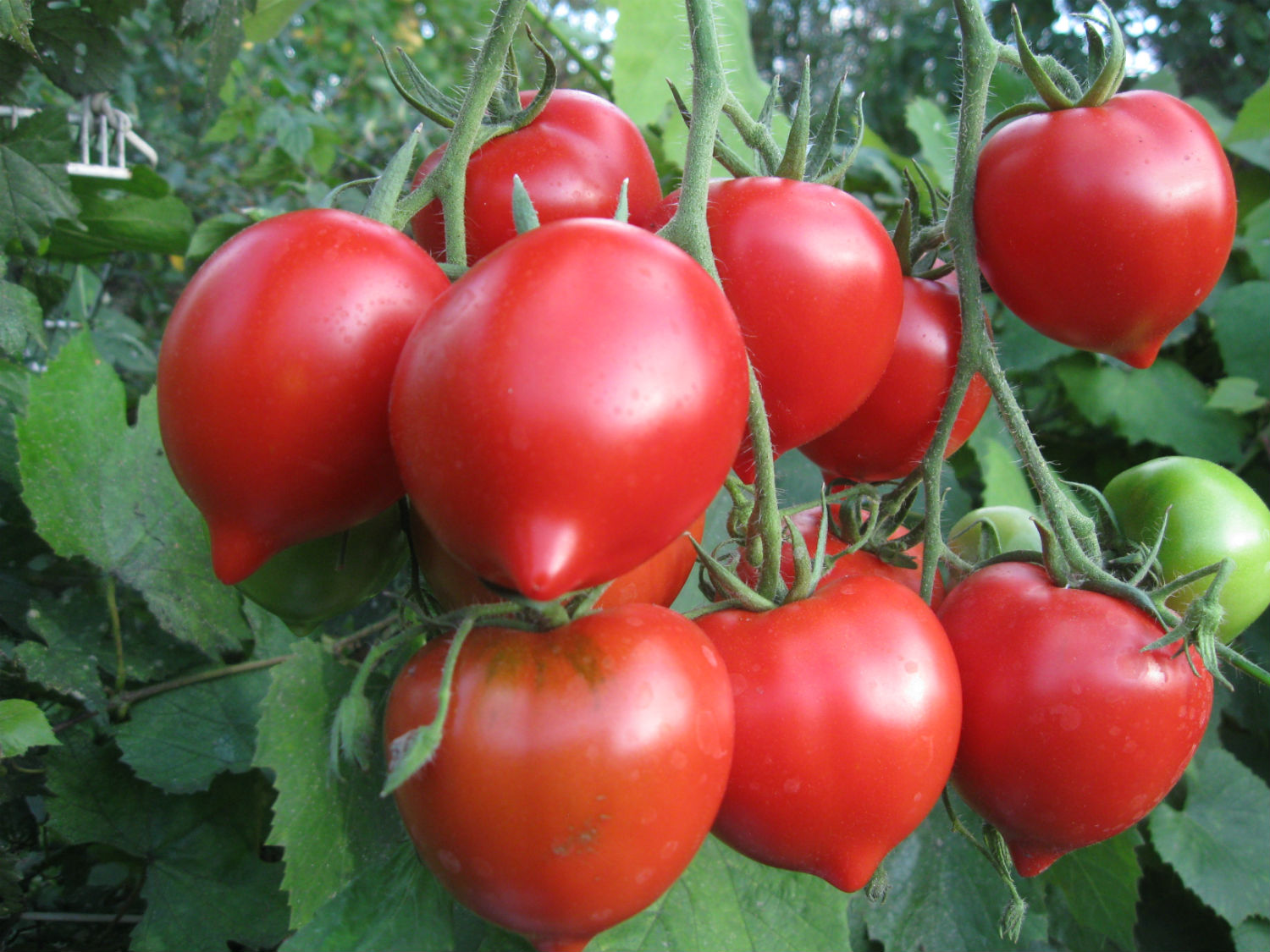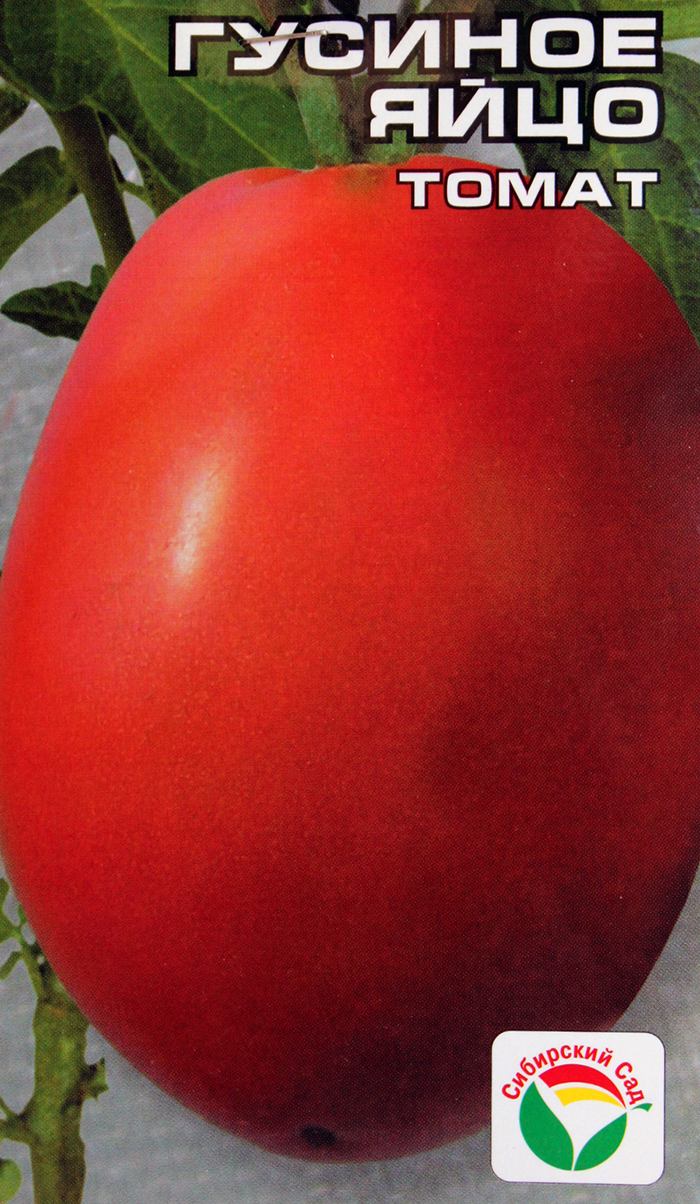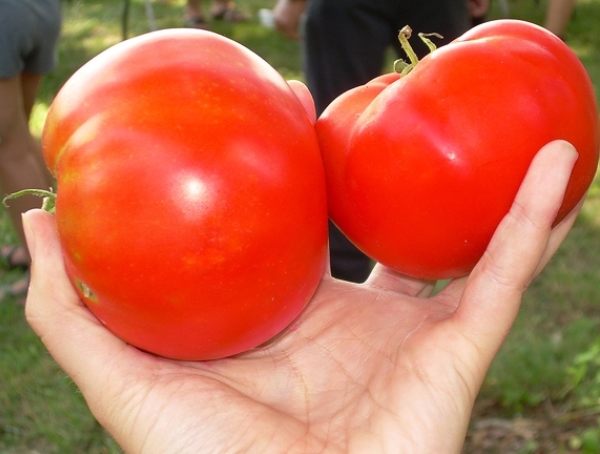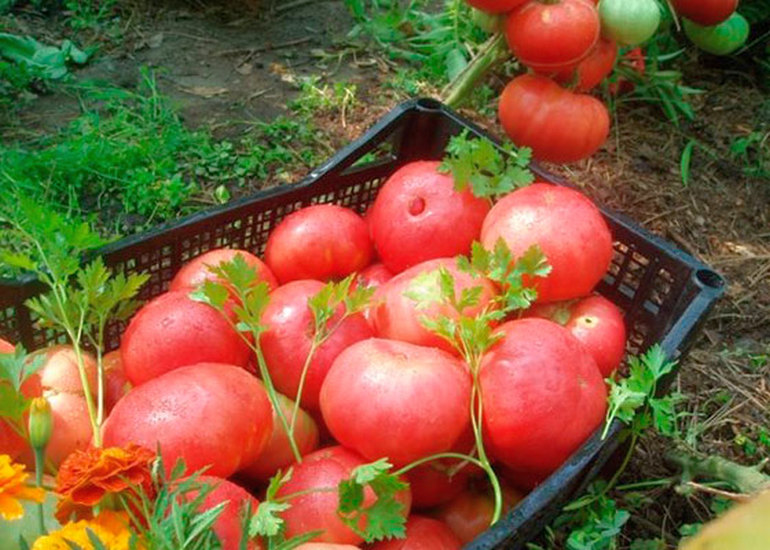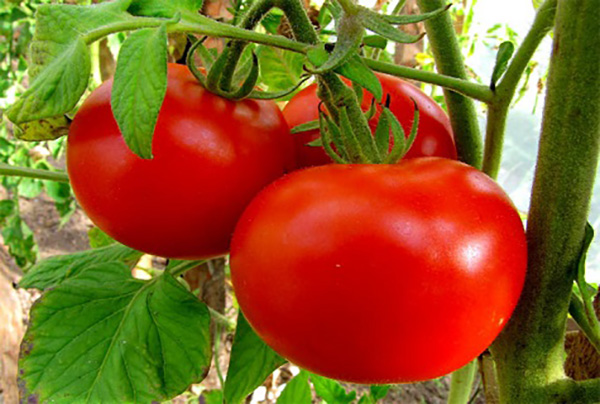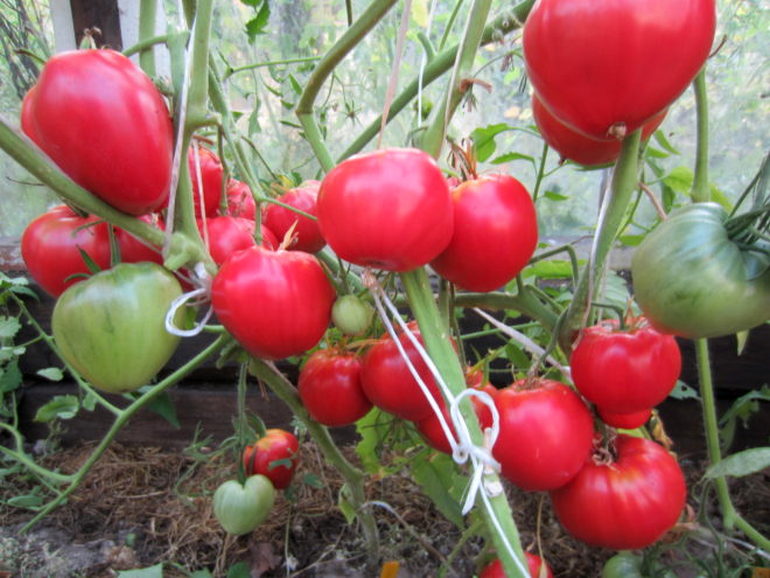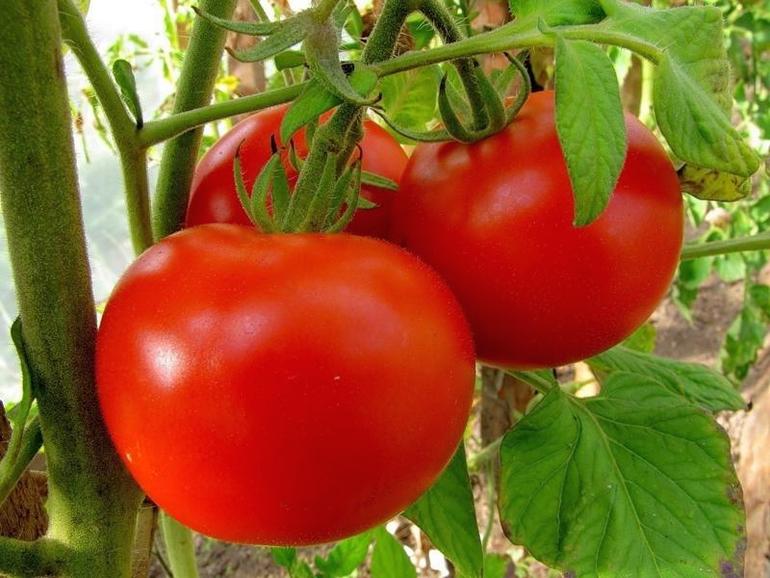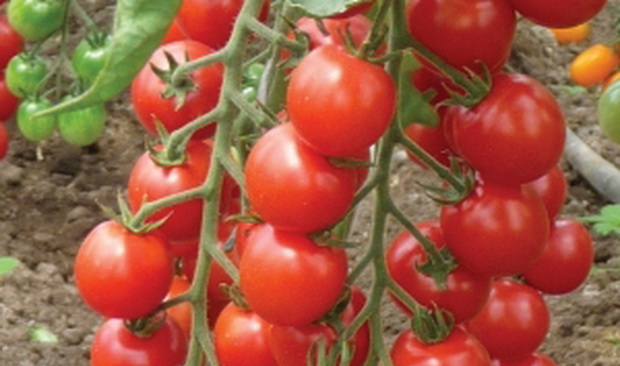Content:
The goose egg is a mid-season, indeterminate bee-pollinated variety of Siberian selection. Differs in high yield and unusual fruit shape. They turn out to be elongated, in shape they strongly resemble an egg.
Tomato Goose egg: characteristics and description of the variety
It is noteworthy that the bush can grow in height to infinity, so the gardener is required to pinch the top when 5 brushes are laid. The height of the bush can reach 2 m, and tying will be required in any case, like pinching. 1-2 branches are left, and the rest are removed.
The ripening time from seedling emergence is 110-115 days. It is possible to get a good harvest both in the open field and in the greenhouse.
Complex-shaped brushes bear up to 8 tomatoes, and usually ripening occurs evenly - the entire brush ripens at the same time. The firm, bright red fruits are very fleshy. The taste is sweet and there are few seeds. The weight of a tomato reaches 200-300 g, and up to 7 kg can be harvested from a bush. Green, well-formed fruits can be harvested earlier and laid out in the sun to ripen.
Growing features
If the seedlings are grown for a greenhouse, they are sown at the end of February. For open ground, the sowing period in seedling boxes is the last decade of March. In open ground, you can plant seeds when the soil warms up to + 10-12 0С.
Sowing
It is recommended to soak seeds a day before sowing in order to identify non-germinating and to hasten the emergence of seedlings. Given the rapidity of the growth of the bushes, you can do without picking, immediately sowing 1-2 seeds in each glass with a diameter of 8 cm, putting a little crushed eggshell on its bottom.
In greenhouses and on the beds, the soil for sowing is prepared in the same way. It is necessary to add as much organic matter as possible (humus, mullein, chicken droppings). With this approach, planting per season will require no more than 2 fertilizing with complex mineral fertilizer.
The planting density is no more than 3 bushes per 1 m2 in the beds, or 4 bushes in the greenhouse. If sowing is carried out in the ground, then up to 70 cm is left in the aisles, and 45-40 cm between individual bushes.
Care
As soon as the plant begins to throw out the brushes, you must carefully monitor its formation. The bush will need to be fixed on the trellis at least at 2 points, and the brushes must be tied up separately. As the brushes mature, the lower leaves are removed before them. The peculiarity of this variety is that the upper brushes are heavier than the lower ones, on them the weight of the fruit can reach 350 g.
Watering is necessary regularly, but waterlogging should not be allowed. It is important to ensure that the root tip is not exposed, performing hilling as necessary.
Harvesting
The first tomatoes in the garden ripen in early August. In greenhouses, ripening is much earlier - at the beginning of summer. Collect the lowest bunches first, gradually rising up. At temperatures up to + 4 ° C, the harvest is stored for up to 45 days, and if the summer is cold, unripe fruits are harvested and placed in a warm place for ripening.
Advantages and disadvantages
Valuable qualities can be considered:
- Resistance to late blight;
- Undemanding to illumination, which is important for Siberia;
- High productivity;
- Intense sweet and sour taste;
- Excellent transportability.
Among the shortcomings, one can note the laboriousness in caring for spreading and very tall bushes. However, it is obvious that the variety has much more advantages.
